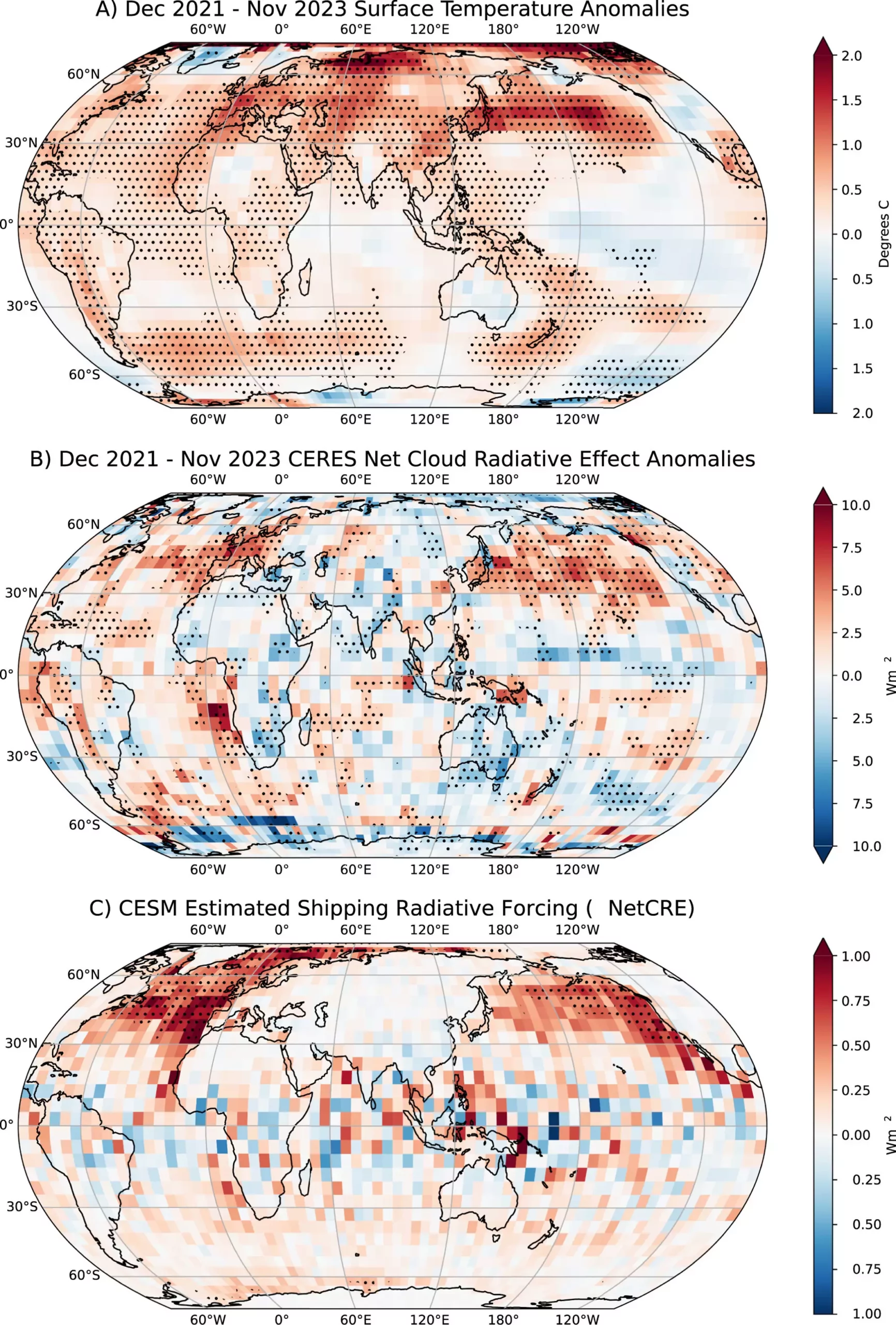The phenomenon of climate change has reached alarming proportions, especially in light of recent studies indicating that 2023 was Earth’s warmest year on record. A remarkable contribution to this warming was found to be associated with the significant reduction of sulfur emissions from the shipping industry. Research conducted by scientists at the Pacific Northwest National Laboratory, published in the journal *Geophysical Research Letters*, highlights an intriguing interplay between air quality regulations and global temperature dynamics.
In 2020, international regulations were enacted by the International Maritime Organization that aimed to cut down sulfur emissions from shipping fuel by approximately 80%. This historic shift has led to a decline in sulfur dioxide emissions that typically permeate the atmosphere when ships burn fuel. As sulfur dioxide reacts with moisture and sunlight in the atmosphere, it can form sulfur aerosols, which are pivotal in moderating climate by reflecting sunlight. Notably, these aerosols have been recognized as vital players in the complex climate system, significantly affecting temperature fluctuations, especially in the northern hemisphere.
These changes, intended primarily to improve air quality around shipping ports, have broader implications for climate dynamics. The presence of sulfate particles aids in cloud formation, particularly known as ship tracks, which have been shown to linger along shipping routes. In reducing these particles, the regulatory measures unwittingly set off a cascade of warming effects.
The groundbreaking study adopts a machine learning methodology to assess over a million satellite images, allowing for a robust estimation of the reduction in ship tracks. Findings suggest that there has been a significant drop of between 25% to 50% in these visible trails. Astonishingly, in regions where these ship tracks have diminished, a corresponding rise in temperature has been observed.
The researchers simulated atmospheric conditions in three distinct climate models, comparing the outcomes with observed trends in cloud formation and temperature surges since the enforcement of sulfur emission regulations. Their analysis indicates that nearly 50% of the warming potentially instigated by these shipping policy changes has already manifested within a mere four years. This raises critical questions regarding the immediate and future implications of these regulations on global warming, as the interconnectedness of these systems is still not fully understood.
It is essential to recognize that shipping emissions are not the sole drivers of the dramatic temperature increases witnessed in recent years. The intricate climate network comprises various elements, including greenhouse gas concentrations and natural oscillations in climate patterns. The study indicates that while sulfur emissions have a cooling effect, their rapid decline may subject the planet to an expedited warming phase. This precarious balance highlights the uncertainties inherent in climate modeling, particularly relating to aerosol effects.
As stated by Andrew Gettelman, a leading scientist in the research, “Cleaning up air quality faster than limiting greenhouse gas emissions may be accelerating climate change.” This notion is particularly concerning, as it necessitates a nuanced approach to environmental policy—one that balances the necessity for improved air quality with the urgent need to address greenhouse gas emissions comprehensively.
Despite the enlightening outcomes of this research, substantial uncertainties persist regarding the extent of warming that may arise from reducing sulfur emissions. There is a pressing need for improved access to detailed data on ship movements and emissions, as well as enhanced modeling that incorporates potential feedback loops from oceanic conditions. Such advancements in research methodologies are vital for better forecasting the climate ramifications of regulatory changes.
The revelations gleaned from the recent studies underscore the intricate relationship between human activity, atmospheric composition, and climate change. The results call for a critical reassessment of our environmental strategies, emphasizing the importance of targeted measures that consider the interconnectedness of air quality and global warming. As the world navigates the complexities of decarbonization, a holistic understanding of the climate response to changing emissions is essential for forging a sustainable future.

